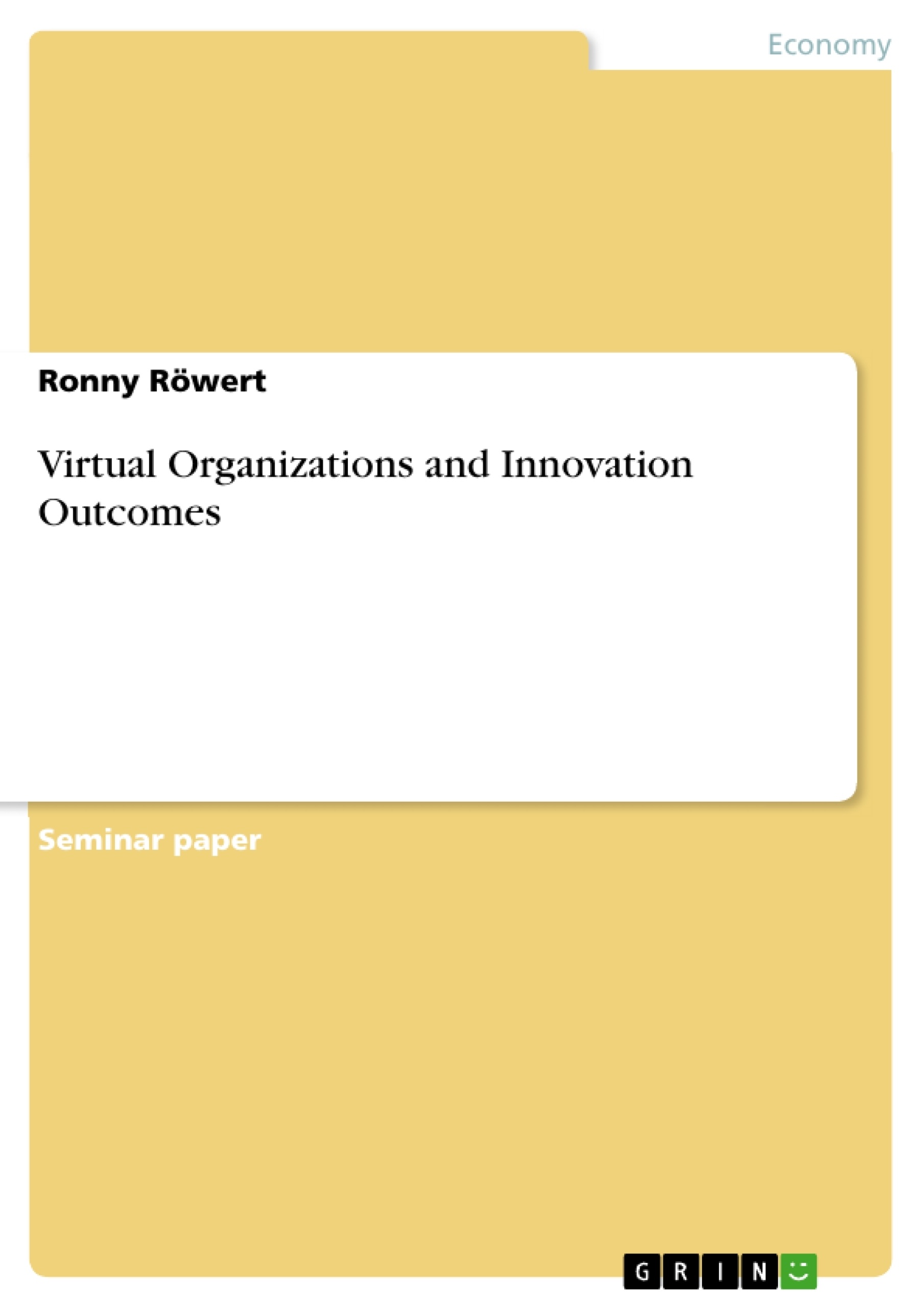The global business world experiences dramatic developments, shifts and challenges since the end of the last century. Factors such as international competition, knowledge-based production, technological changes, advances in IT, and deregulation play an increasingly important role. Hence, conventional organizational concepts and structures of the ‘old economy’ come under growing pressure due to insufficient capabilities to deal with these landslide changes. Traditional organizational structrues, most prominently the classical bureaucracy with its conventional formalized and hierarchical form, are displaced by new organizational forms. More horizontal relationships, with partners (internal or external) being only focused on core competencies, take the place of old vertically structured hierarchies. More interactive communication approaches, both vertically and horizontally, can be observed. More decentralized management concepts lead to incentive-based and increasingly autonomous project teams (Clegg, Kornberger, & Pitsis, 2005).
According to one of the most renowned management theorists Henry Mintzberg (1981), for every specific configuration of an organization’s environment and its tasks, particular organizational structures fit best. Therefore, one could expect that new organizational forms are best capable of dealing with prevailling challenges such as innovation. This essay aims to analyse the case of virtual organizations and the way they might shape, and/or derail the processes and outcomes of innovation.
Inhaltsverzeichnis (Table of Contents)
- Introduction
- Definitions
- Reasons for emergence
- Impact of organizational form on innovation outcomes
- Challenges for innovation processes
- Management tools to enhance innovation processes
Zielsetzung und Themenschwerpunkte (Objectives and Key Themes)
This essay examines the relationship between virtual organizations (VOs) and innovation outcomes. It analyzes how VOs can both shape and hinder innovation processes, highlighting the key advantages and challenges associated with this organizational form. The essay seeks to understand the specific ways in which VOs can facilitate innovation, while also exploring potential obstacles that may arise in the process. The main themes explored are:- The definition and characteristics of virtual organizations
- The advantages of VOs in fostering innovation, including cost reduction, access to diverse resources, and increased flexibility
- Challenges associated with VOs, such as managing communication, ensuring resource allocation, and overcoming potential knowledge loss
- The role of management tools and approaches in promoting innovation within VOs
Zusammenfassung der Kapitel (Chapter Summaries)
- Introduction: This section introduces the concept of virtual organizations and their emergence in response to changing global business environments. It explores the shift from traditional hierarchical structures to more flexible and decentralized models, highlighting the importance of understanding the potential of VOs in driving innovation.
- Definitions: This chapter delves into the various definitions of virtual organizations found in academic literature, emphasizing the diverse interpretations and ongoing debate surrounding the term. It then presents a specific definition adopted for this essay, highlighting the key characteristics of VOs and outlining the scope of the discussion.
- Reasons for emergence: This chapter explores the reasons for the rise of virtual organizations, showcasing their advantages in terms of flexibility, adaptability, and cost efficiency. It outlines how VOs can leverage specialized competencies, achieve synergistic effects, and capitalize on global market opportunities through collaborative networks.
- Impact of organizational form on innovation outcomes: This chapter focuses on the potential of virtual organizations to influence innovation processes and outcomes. It examines how VOs can facilitate cost sharing, resource access, and a more interactive and distributed approach to innovation. The chapter also explores the role of transaction cost economics and the impact of decentralized structures on fostering innovation.
- Challenges for innovation processes: This chapter shifts focus to the potential challenges associated with virtual organizations in the context of innovation. It highlights potential issues such as managing flexibility, ensuring contractual alignment, allocating financial resources, and mitigating knowledge loss. The chapter also examines the importance of effective communication and managing intellectual property rights in collaborative networks.
- Management tools to enhance innovation processes: This chapter delves into management tools and approaches aimed at promoting innovation within VOs. It discusses the concept of Distributed Innovation Management (DIM) and the Virtual Breeding Environment (VBE), highlighting how these tools can foster collaboration and enhance innovation outcomes. The chapter also explores the need for a differentiated view of innovation management, acknowledging that innovation is neither solely planned nor entirely unpredictable.
Schlüsselwörter (Keywords)
This essay focuses on the key concepts of virtual organizations (VOs), innovation, collaborative networks, transaction costs, knowledge management, distributed innovation management (DIM), and virtual breeding environments (VBEs). It examines the interplay between these elements and their impact on achieving successful innovation outcomes in the context of dynamic and decentralized organizational structures.- Quote paper
- Ronny Röwert (Author), 2011, Virtual Organizations and Innovation Outcomes, Munich, GRIN Verlag, https://www.grin.com/document/182360



